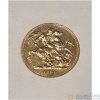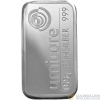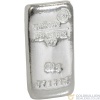Weighing Your Wealth: The Significance of a Gold Ounce Bar in Modern Investing

Gold has always been a symbol of wealth and prosperity, and in modern investing, its significance cannot be overlooked. From adding gold to your investment portfolio to understanding the specifications of gold ounce bars, there are key takeaways that every investor should consider. Let’s delve into the significance of gold in modern investing and weigh the pros and cons of this valuable asset.
Key Takeaways
- Adding gold to your investment portfolio provides diversification and a hedge against inflation.
- Investing in gold bars offers a tangible and secure form of wealth preservation.
- Physical gold investing requires careful consideration of storage and insurance options.
- Understanding the specifications of gold ounce bars is crucial for making informed investment decisions.
- Eligibility for inclusion in a self-directed IRA opens up tax-advantaged investment opportunities.
The Significance of Gold in Modern Investing
Adding Gold to Your Investment Portfolio
In the ever-shifting sands of the economic landscape, gold stands as a beacon of stability for investors seeking to fortify their portfolios. The intrinsic allure of gold, with its tangible presence and historical resilience, offers a compelling argument for its inclusion in a diversified investment strategy.
Gold’s role in a portfolio extends beyond mere aesthetics; it serves as a hedge against inflation and economic uncertainties. When traditional assets such as stocks and bonds falter, gold often maintains its value, providing a counterbalance to market volatility.
The decision to incorporate gold into your investment portfolio is not merely about following the latest trend but about constructing a resilient and well-informed financial plan.
Investment options in gold are manifold, ranging from physical coins and bars to gold funds, ETFs, and digital gold. Each avenue presents its own set of considerations:
- Physical gold offers the security of direct ownership.
- Gold funds and ETFs provide ease of trading and liquidity.
- Digital gold combines the permanence of gold with modern investment convenience.
Regularly reassessing your investment mix is crucial to ensure it aligns with your financial goals and the current economic climate. As we step into 2024, the case for gold as a stabilising force in your portfolio becomes increasingly persuasive.
Investing in Gold Bars
Investing in gold bars is a tangible method of diversifying one’s investment portfolio. Unlike stocks or bonds, gold bars represent a physical asset that investors can hold in their hands, providing a sense of security and direct ownership. Gold bars come in various sizes, from as small as 5 grammes to as large as 1 kilogramme, catering to different investment scales and preferences.
When considering the purchase of gold bars, it’s essential to be aware of the various brands and options available. For instance, reputable brands such as Umicore, GBD, and Metalor offer high-quality gold bars that can be delivered or stored securely.
It’s also crucial to consider the logistics of owning physical gold, including storage and insurance. While owning gold bars can be a rewarding investment, potential downsides such as storage costs, insurance, and the risk of theft must be carefully considered. Here is a brief overview of the factors to keep in mind:
- Storage options: home safe, bank deposit box, or secure storage facilities
- Insurance coverage for theft or damage
- Resale value and liquidity
- Buyback guarantees and policies
Investors should also note that some retailers, including big box stores like Costco, have made it easier to purchase gold bars, thus increasing accessibility for those looking to invest in the precious metal.
Physical Gold Investing
Investing in physical gold encompasses acquiring tangible assets such as gold bars and coins. Investors have direct ownership over their gold, providing a sense of security and intrinsic value. Unlike digital gold or gold securities, physical gold is a tangible asset that investors can see and touch, offering a quality of tangibility that resonates with many.
Advantages of physical gold investing include its role as a hedge against inflation and economic uncertainties. However, potential downsides should not be overlooked. These include considerations for secure storage and insurance, as well as the lack of liquidity compared to digital or paper gold investments.
The decision to invest in physical gold should be made after careful consideration of both its merits and the responsibilities it entails.
Here is a summary of key points to consider when investing in physical gold:
- Direct ownership and control over the investment
- Tangible asset with intrinsic value
- Hedge against inflation and economic uncertainties
- Need for secure storage and insurance
- Potential issues with liquidity and resale value
Understanding Gold Ounce Bars
Specifications of Gold Ounce Bars
Gold ounce bars are a staple in the precious metals market, offering a tangible asset that many investors find appealing. Each gold bar is typically struck from .9999 fine gold, representing the purity and quality of the investment. These bars contain exactly 1 ounce of pure 24 karat gold, making them a standardised unit for trade and valuation.
The dimensions and weight of a gold ounce bar can vary slightly depending on the mint, but they generally adhere to strict specifications to ensure consistency. Here’s a quick overview of the typical characteristics of a 1 oz gold bar:
- Purity: .9999 fine gold
- Weight: 1 troy ounce
- Karat: 24 karat
When considering the purchase of gold bars, it’s important to note the hallmark of the product. This mark signifies the mint that produced the bar and can include names such as PAMP, Perth, RMC, International Trade Bullion, and Credit Suisse. The hallmark is a guarantee of the bar’s authenticity and quality.
Investors should be aware that while the weight and purity are standardised, the dimensions and appearance of gold ounce bars can differ based on the mint that produces them.
It’s also worth mentioning that gold bars come in various sizes, ranging from 1 gramme to kilo bars, catering to different investment scales and preferences. However, the 1 oz gold bar remains a popular choice for its balance between value and portability.
Eligibility for Inclusion in Self-Directed IRA
Investors seeking to diversify their retirement portfolios often look towards gold as a stable asset. Gold bullion bars are particularly attractive for inclusion in Self-Directed Individual Retirement Accounts (IRAs) due to their tax efficiency and potential for capital appreciation. In the UK, gold bullion can be acquired within a Self-Invested Personal Pension (SIPP), offering full tax relief and aligning with long-term retirement planning.
When considering gold for your retirement savings, it’s crucial to understand the eligibility criteria and the tax advantages associated with such investments.
For gold to be eligible for a SIPP, it must meet certain criteria:
- The gold must be of a minimum purity of 99.5%.
- It should be stored in an accredited depository.
- The gold bars must be produced by a manufacturer accredited by the London Bullion Market Association (LBMA).
Investing in gold and silver can be a prudent choice, considering the current spot prices and the range of products available for purchase. It’s important to note that while gold does not generate income, such as dividends from stocks, it can offer a hedge against inflation and currency devaluation over time.
Authenticity and Assay of Gold Bars
When it comes to investing in gold bars, the authenticity and assay process are of paramount importance. Investors must ensure that the gold they purchase is genuine to protect their investment. The purity of gold bars is typically measured in fineness, which indicates the proportion of pure gold in the bar. For example, a fineness of 999.9 signifies a purity of 99.99% pure gold.
The assay process is a rigorous procedure that verifies the weight and purity of a gold bar. Each bar is usually accompanied by an assay card, which provides essential details such as the bar’s weight, fineness, and the signature of the assayer.
It is crucial for buyers to be aware of the potential for counterfeit gold bars in the market. Techniques for creating convincing fake-gold bars have evolved, making it more challenging to distinguish authentic bars from forgeries. Therefore, purchasing from reputable dealers and verifying the accompanying assay information is essential for investor confidence.
Here are some steps to ensure the authenticity of gold bars:
- Always buy from well-known and trusted dealers.
- Check the accompanying assay card for details on weight and purity.
- Be cautious of deals that seem too good to be true, as they may indicate counterfeit products.
- Consider professional third-party verification for added peace of mind.
Weighing the Pros and Cons of Gold Investing
Benefits of Investing in Physical Gold
Investing in physical gold, such as gold ounce bars, has long been revered as a cornerstone of wealth preservation. Gold’s intrinsic value and its historical role as a hedge against inflation make it a compelling choice for investors seeking stability in their portfolios. The tangible nature of gold bars offers a sense of security that is unmatched by paper assets or digital representations of value.
- Hedge against economic uncertainties
- Preservation of wealth over time
- No counterparty risk
The allure of physical gold lies in its ability to retain value and provide a safe haven during times of financial turmoil.
While gold ETFs and digital gold provide avenues for investment, they come with their own set of risks and may not offer the same level of psychological comfort as holding a gold bar in one’s own safe. It is crucial to consider the full spectrum of investment options and understand the unique advantages that physical gold brings to the table.
Considerations for Gold Storage and Insurance
When adding physical gold to your investment portfolio, it’s crucial to consider the logistics of storage and the necessity of insurance. Storing gold safely is paramount to protect your investment from theft or damage. Investors have various options, including home safes, safety deposit boxes at banks, or secure storage facilities offered by private companies.
Insurance is another key consideration. While it adds to the overall cost of investing in gold, it provides peace of mind and financial protection against potential losses. Here’s a brief overview of what to consider:
- Security: Evaluate the security features of your chosen storage option.
- Accessibility: Consider how easily you can access your gold when needed.
- Costs: Be mindful of ongoing storage fees and insurance premiums.
- Insurance Coverage: Ensure your policy covers the full value of your gold investment.
It’s essential to balance the costs of storage and insurance with the benefits of owning physical gold. While these considerations add layers of complexity to gold investing, they are indispensable for safeguarding your assets.
Potential Downsides of Physical Gold Investing
While gold is often lauded for its stability and potential as a hedge against inflation, investors must consider the potential downsides of physical gold investing. One of the primary concerns is the cost of storage. Investors need to secure a safe location to store their gold, which can incur significant expenses, especially for larger investments. Additionally, the need for insurance to protect against theft or loss adds another layer of ongoing costs.
Storage and insurance costs can quickly erode the returns on your gold investment, particularly if the market price of gold does not appreciate as expected. Moreover, the liquidity of physical gold can be lower than other assets, meaning it may take longer to sell and convert into cash when needed. Transaction costs are also typically higher for physical gold, as buying and selling can involve premiums over the spot price of gold.
The allure of physical gold must be balanced with the practicalities of its ownership, which can present unique challenges and expenses.
Lastly, the risk of theft is a non-negligible factor. Physical gold is a tangible asset that can attract the attention of thieves, and investors must be vigilant in ensuring their investment is secure at all times. Here is a summary of the key considerations:
- Storage costs
- Insurance premiums
- Lower liquidity compared to other assets
- Higher transaction costs
- Risk of theft
Conclusion
In conclusion, the significance of a gold ounce bar in modern investing cannot be overstated. With the ability to add gold to your investment portfolio, the 1oz gold bar offers a secure and tangible asset that is eligible for inclusion in a self-directed IRA. This investment option provides a great way to diversify and protect wealth, especially in times of economic uncertainty. While there are potential downsides to investing in physical gold, such as storage and insurance costs, the benefits of owning a tangible store of value are undeniable. As experts weigh in on the future of gold prices, it’s clear that the 1oz gold bar remains a valuable and sought-after investment choice for those looking to safeguard their wealth.
Frequently Asked Questions
How can I add gold to my investment portfolio?
You can add gold to your investment portfolio by purchasing gold bars or gold coins. These can be bought from reputable dealers and are a valuable addition to a diversified investment portfolio.
What are the specifications of a gold ounce bar?
A gold ounce bar is typically made of .9999 fine gold and contains one troy ounce of pure gold. It is eligible for inclusion in a self-directed IRA, and comes sealed with an assay card for authentication.
What are the benefits of investing in physical gold?
Investing in physical gold provides a hedge against inflation, economic uncertainty, and currency devaluation. It also offers direct ownership and tangible value.
How should I store and insure my physical gold investment?
Physical gold should be stored in a secure and insured location, such as a safe deposit box or a professional vault. Insurance coverage should be obtained to protect against theft or loss.
What are the potential downsides of physical gold investing?
Potential downsides of physical gold investing include storage costs, insurance costs, and the risk of theft. These factors should be carefully considered when weighing the benefits of gold investing.
Are gold bars eligible for inclusion in a self-directed IRA?
Yes, gold bars that meet the specified standards (e.g. .9999 fine gold) are eligible for inclusion in a self-directed IRA, with additional paperwork required for verification.










